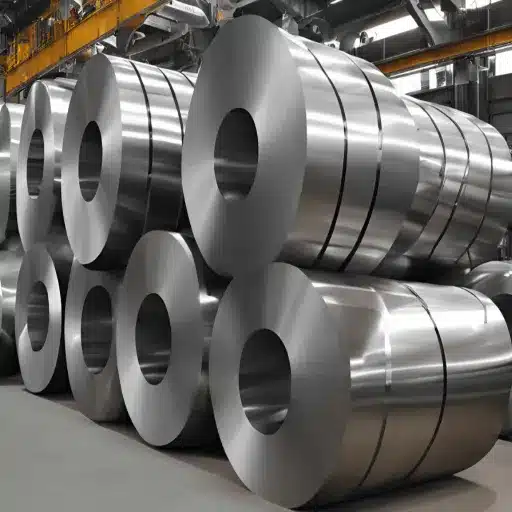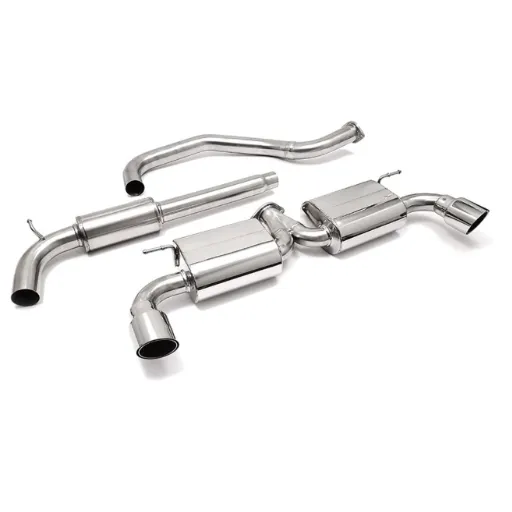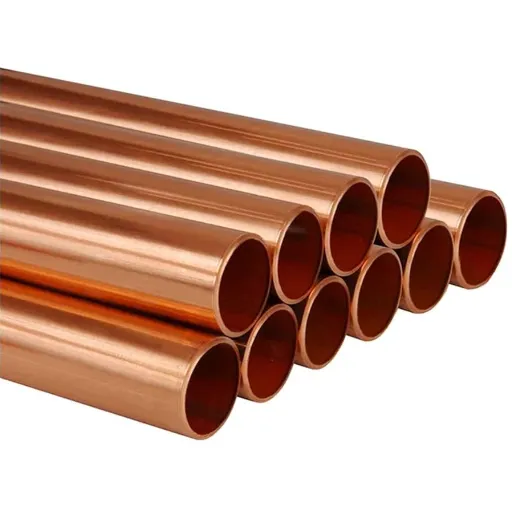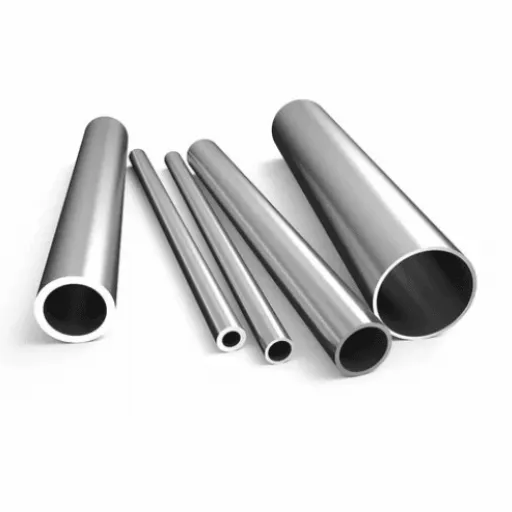The American National Standard Taper Pipe Thread (NPTF) is very important for ensuring a tight and secure connection in industrial work. Many people use it, but many professionals still find it difficult to understand its uses in conjunction with other standards, making it problematic when choosing the right parts for essential systems. This article explains in detail the basics of NPTF pipe threads, explaining features and points about compatibility, and outlines critical use cases. Whether you are an old engineer or a new learner of pipe thread standards does not matter. This guide hopes to open up doors for accurate understanding in decision-making. As we uncover the mysteries that need to be revealed, we will focus on the systems optimized for accuracy and improved effectiveness.
What is the NPTF Thread and How Does it Differ from Other Pipe Threads?
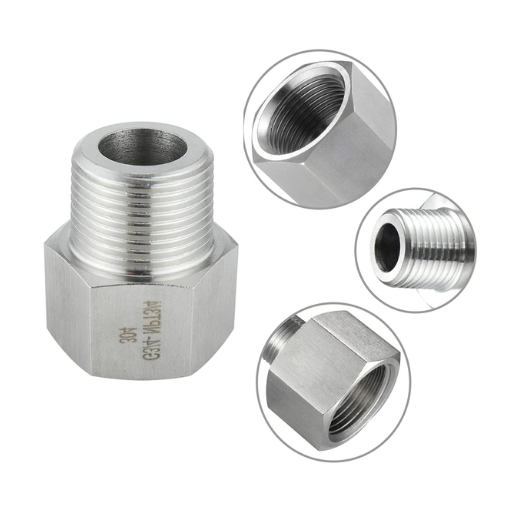
The National Pipe Taper Fuel (NPTF) threads are tapered pipe threads that provide dry seals and are designed to grip tightly without additional sealing materials like Teflon tape and thread sealant. Unlike NPT (National Pipe Taper) threads, which depend on sealing materials to avoid leaks, NPTF threads seal by contact of the metal surfaces on the threads, known as contact sealing. Because of this characteristic, NPTF threads are suitable for high-pressure requirements in hydraulics and fuel systems, making them particularly useful in industries where dependable seals, and thus precision, are critical. The primary distinction between NPT and NPTF threads is the accuracy of their dimensions and tolerances of the threads; in this case, tighter and more precise for leak-free conditions are used in NPTF.
Understanding the Thread Taper and Its Importance
Thread taper is essential in connecting threads because it dramatically affects the connection’s sealing ability and performance. A tapered thread has a more narrow diameter along its length, therefore providing tighter engagement as the threads are screwed together. This taper doesn’t only increase the strength of the joint, but also helps reduce leaks by providing a good-fit compression.
For NPT threads, the common taper rate is 1/16 inch per inch of thread length. This means the thread diameter decreases 1 inch for every 16 inches of thread length. This taper allows threads to be tightened and the contact area to increase, thus providing a better seal. NPTF threads also have the same taper rate but are finely machined to allow metal-to-metal contact without needing sealants.
Thread taper plays an important role in high-pressure applications. Studies show that a properly tapered NPT or NPTF thread can sustain pressure beyond ten thousand PSI, which is perfect for hydraulic systems and gas connections. If tapering is not done, the likelihood of thread engagement becoming inconsistent is very high. This results in an increased risk of leaks or joint failure under pressure.
Other studies also mention the importance of taper, like ASME B1.20.1 for NPT threads, which sets rigid requirements for controlling the angle of thread, pitch, and taper for certain industrial applications. Making these outlines and incorporating proper thread taper allows engineers to build sturdy and leakproof connectors in extreme conditions.
Differences Between NPTF and NPT Threads
| Parameter | NPT | NPTF |
|---|---|---|
|
Sealant Requirement |
Requires sealant (e.g., Teflon tape) |
No sealant needed (dry seal) |
|
Leakproof Seal |
Achieved with sealant |
Achieved through thread deformation |
|
Thread Crest and Root |
Allows clearance |
Interference fit for mechanical seal |
|
Applications |
General-purpose |
High-pressure, high-temperature, critical |
|
Reuse |
Can be reused with inspection |
Reuse not recommended |
|
Standard |
ANSI B1.20.1 |
ANSI B1.20.3 |
|
Taper Angle |
60° |
60° |
|
Major Diameter Tolerance |
Wider tolerance |
Narrower tolerance |
|
Spiral Leak Path |
Exists without sealant |
Eliminated by crest/root interference |
|
Visual Difference |
Identical appearance |
Identical appearance |
Applications and Uses of NPTF Threads in Industry
| Industry/Application | Use of NPTF Threads |
|---|---|
|
Fuel Systems |
Leakproof connections in fuel lines |
|
Hydraulic Equipment |
High-pressure hydraulic systems |
|
Pneumatic Systems |
Air compressors and pneumatic tools |
|
Oil and Chemical Industries |
Handling dangerous or fluctuating fluids |
|
Aerospace Applications |
Aircraft fuel and hydraulic systems |
|
High-Pressure Piping |
Transporting natural gas and caustic fluids |
|
Critical Environments |
Where sealants may contaminate systems |
How Does NPTF Thread Compatibility Affect Fitting and Sealant?
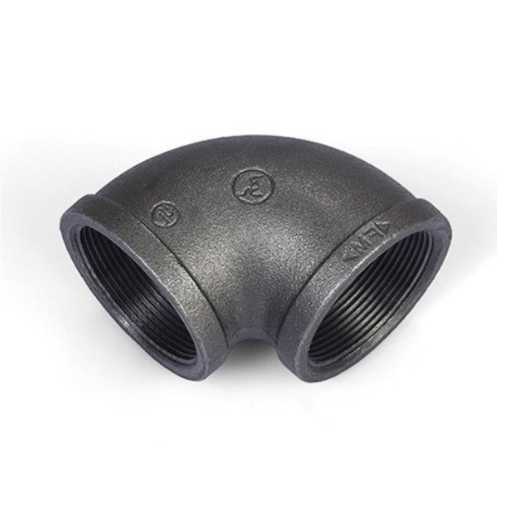
The compatibility of the NPTF thread is known to affect the performance of the fitting and, in a lot of cases, remove the need for other sealants. The specific construction of NPTF threads permits the formation of a dry seal, since crest and root penetration prevent leaking without thread tape and dope. Because of this attribute, NPTF threads are suited for positions requiring steadfast, dependable, and self-sealing joints as they eliminate maintenance and possible leakage points.
The Role of Thread Sealant in Achieving a Leak-Free Seal
| Key Point | Details |
|---|---|
|
Primary Function |
Fills gaps in threads to prevent leaks |
|
Lubrication |
Ease the assembly and disassembly of threads |
|
Material Composition |
PTFE, anaerobic resins, or silicone |
|
Application Types |
Paste or tape for different needs |
|
Curing Process |
Anaerobic sealants cure without oxygen |
|
Temperature Resistance |
Withstands extreme temperature variations |
|
Pressure Handling |
Suitable for high-pressure environments |
|
Chemical Stability |
Resists solvents and chemicals |
|
Preparation |
Clean, degrease, and dry threads before use |
|
Over-Application Risk |
Excess sealant can clog or contaminate systems |
Ensuring Seal Integrity with Proper Thread Connections
Adequate thread sealing, or the use of precision tapered threads, such as NPTF, ensures no gaps that could permit leakage or system failure, which could be problematic.
Why is the National Pipe Taper Fuel Standard Critical for NPTF Threads?
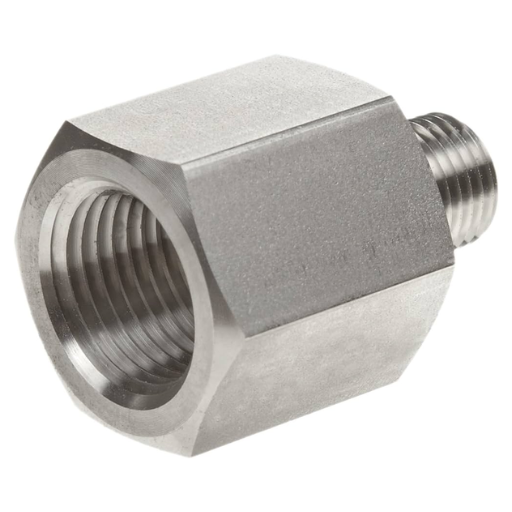
NPTF threads rely on the National Pipe Taper Fuel (NPTF) standard for fuel fittings because it contributes to complex high-pressure systems’ operational compatibility and trustworthiness. This standard ensures the provision of thread spacing and thread cutting technology so that slip joints can be made that do not require external sealing gaskets to achieve proper sealing. This eliminates the need for additional sealing compounds. Compliance with the standard enables vendors to guarantee system dependability because fuel systems are guaranteed to be leak-free, which reduces undesired incidents and promotes safe systems.
Understanding the American National Standard for Tapered Pipe Threads
The American National Standard for Tapered Pipe Threads has multiple essential features that must be incorporated within a single unified standard to achieve exactness and reliability in performance, operation, and execution. These features state the precise pipe thread dimensions and formulate the standards that guarantee the threads’ sustainability, resilience against manipulation, and a watertight seal when combined. After sustained research, five components of the standard were isolated:
- Taper Angle
The angle to form its profile has to be 1°47’24”, which is equal to 3/4 inch per foot.
- Thread Pitch
This per-inch measurement is defined according to the pipe size, which ranges from 18 to 14, 11.5 to 8 threads per inch.
- Thread Depth
The depth of the threads is set to control the amount of overlap and strength in the assembled parts. This is an essential mode of failure governing the pressure under which it may fail.
- Crest and Root Requirements
The statically important thread ‘crest and root’ features are smooth-sharpened to assist the gap tightening, along with stress raisers and other factors that would improve the overall performance.
- Hand-Tight Engagement
The standard states operational alignment should be carried out until hand-tight for three full rotations. This achieves optimal alignment while ensuring the remaining gaps provide adequate compression for sealing upon rotation.
Following these practices ensures that the pipe threads manufactured under this standard pass the set benchmarks and tests for safety, reliability, and efficiency across many industries, including high-pressure ones.
How ASME Standards Impact NPTF Pipe Thread Usage
| Key Point | Details |
|---|---|
|
Standard Reference |
ASME B1.20.3 governs NPTF threads |
|
Leakproof Design |
Ensures dryseal without additional sealants |
|
Taper Specification |
3/4 inch per foot taper for tight fit |
|
Thread Inspection |
Requires precise gaging for compliance |
|
Material Compatibility |
Standards ensure compatibility with materials |
|
Pressure Applications |
Suitable for high-pressure environments |
|
Reuse Guidelines |
Limited reuse due to thread deformation |
|
Thread Tolerances |
Tighter tolerances than NPT threads |
|
Critical Applications |
Used where contamination must be avoided |
|
Global Standards Alignment |
Facilitates international compatibility |
What are the Challenges with NPTF and NPT Pipe Threads?
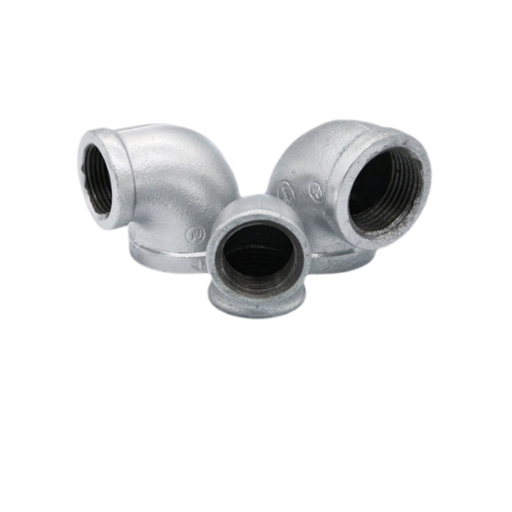
Creating a seal is a key problem with the NPTF and NPT pipe thread types. NPTF dry seal threads are intended to seal a cavity by deforming the threads, which seal rails apply additional sealing materials such as Teflon tape or thread sealant to prevent leakage. Wrong assembly may result in leakage, Reduction in holding pressure, or even total system failure. Ensuring compatibility within the NPTF and NPTF components also presents a problem because these two thread types cannot be interchanged due to their unique designs and intended functions. Threads’ misuse or mistaken pairing may cause unfit connections and poor functionality.
Common Issues with NPT and NPTF Thread Compatibility
| Key Issue | Details |
|---|---|
|
Sealant Dependency |
NPT requires sealant; NPTF does not |
|
Leakage Risk |
NPT threads may leak in NPTF systems |
|
Thread Damage |
NPTF threads can deform NPT threads |
|
Improper Fit |
NPT and NPTF threads differ in tolerances |
|
Pressure Tolerance |
NPT threads fail under NPTF high pressure |
|
Sealant Contamination |
Sealant in NPTF systems may cause issues |
|
Mixing Threads |
Leads to inconsistent sealing performance |
|
Maintenance Challenges |
Hard to identify and replace mixed threads |
|
Application Mismatch |
NPT unsuitable for critical NPTF applications |
|
Visual Similarity |
Causes confusion and incorrect usage |
Resolving Leakage Problems in Thread Connections
In addressing leakage issues with threaded pipe fittings, as a best practice, I start with clean threads without any foreign materials before assembly. I select the correct sealant or threaded tape and apply it uniformly to form a tight bond and achieve favorable results. I ensure all steps are completed as required for their specific application. When adjusting the connection, I adhere to the prescribed torque values so that the connection is neither too slack nor too tight. To ensure a tight seal, I put the pipe to the test for pressure and see if any leaks are evident. If leaks do not disappear, I verify that the threads in question are properly fitting and inspect the levels of damage and wear.
Adjustments for Different Thread Types
Their unique features and needs should be considered when dealing with different thread types. Each thread type may require specific steps for proper fitting, sealing, and effective operation. Below are five common thread types and the modifications needed to use them effectively:
- NPT (National Pipe Thread)
With NPT threads, sufficient thread sealant or tape is required as these threads seal by means of interference fit. Make sure that the threads mesh adequately and are also clamped at the desired torque to avoid leaks.
- BSP (British Standard Pipe)
BSP threads come in Parallel (BSPP) and Tapered (BSPT). BSPT threads shall be sealed using a sealant. BSPP threads need a sealing O-ring or gasket; therefore, inspect the sealing surface before applying more head.
- UN (Unified National)
Preparation of these threads usually involves some form of adjusting to aid with alignments and some form of anti-seize oil. For these threads, the dose of tangential force, which should not go beyond the stripping threshold, needs to be very carefully considered.
- ISO Metric Threads
As threads of metric denomination are of a more universally accepted standard globally, the alignment during use time should be correct. Depending on type of threads, they require screws, washers or seals which might impede issuel of leaks so proactive mesure must be taken with put sealing elements.
- ACME Threads
Threads of this type are frequently utilized in construction and other heavy-load applications. They require care in alignment and a check for damage or wear, as their wide design can become less accurate over time. Lubrication is essential for smooth operation.
Adjusting these thread types can enhance the dependability of connections. Follow best practices set by the manufacturer.
How Do British Standard Pipe Threads Compare to NPTF Pipe Threads?
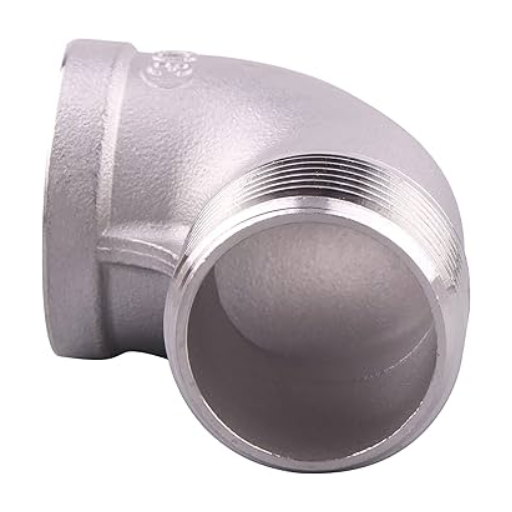
The distinguishing factors between BSP and NPTF are their thread design and sealing method. BSP threads were developed in Europe and Asia and have a thread angle of 55 degrees, while NPTF threads are used in North America and have a thread angle of 60 degrees. BSP threads need sealing with a gasket or O-ring, whereas NPTF threads have a mechanical seal formed via threaded connection tightening, closing the gap. Remember, however, that these threads cannot be used interchangeably due to differences in angle, thread pitch, and thread profile. Be sure to select the correct parts.
Comparing Metric Thread and NPTF Standards
| Parameter | Metric Thread | NPTF Thread |
|---|---|---|
|
Standard |
ISO Metric (ISO 724) |
ANSI/ASME B1.20.3 |
|
Thread Angle |
60 degrees |
60 degrees |
|
Measurement Unit |
Millimeters |
Inches |
|
Sealing Mechanism |
Requires O-rings or sealants |
Metal-to-metal dry seal |
|
Thread Type |
Parallel |
Tapered |
|
Applications |
General-purpose mechanical connections |
High-pressure, fuel, and hydraulic systems |
|
Tolerance |
Standardized for general use |
Tighter tolerances for leak prevention |
|
Pitch |
Distance between threads in mm |
Threads per inch (TPI) |
|
Usage Region |
Common in Europe and globally |
Common in North America |
|
Compatibility |
Not compatible with tapered threads |
Not compatible with Metric threads |
Understanding Thread Pitch and Thread Angle Differences
| Parameter | Description |
|---|---|
|
Thread Pitch |
Distance between adjacent thread crests |
|
Metric Pitch |
Measured in millimeters |
|
Imperial Pitch |
Measured as threads per inch (TPI) |
|
Thread Angle |
Angle between thread flanks |
|
Standard Thread Angle |
Commonly 60 degrees |
|
Specialized Thread Angles |
Vary for specific applications (e.g., NPT) |
|
Impact on Fit |
Pitch and angle must match for compatibility |
|
Measurement Tools |
Pitch gauge, calipers, or optical comparator |
|
Fine Threads |
Smaller pitch, closer threads |
|
Coarse Threads |
Larger pitch, deeper threads |
References
-
Oshwin Blog: NPTF Pipe Thread Technical Data and Compatibility – Provides detailed technical data and compatibility information for NPTF threads.
-
Fittings.Space: NPT and NPTF Fittings – Explains the standards and differences between NPT and NPTF threads, including their compatibility.
-
Industrial Specialties Manufacturing: NPT & NPTF Tapered Threads – Discusses the technical aspects and leakproof characteristics of NPT and NPTF threads.
Frequently Asked Questions (FAQ)
Q: What is the difference between NPT and NPTF pipe threads?
A: NPT and NPTF pipe threads differ mainly in their sealing capabilities. NPT threads are tapered and require thread tape or sealant for a leak-proof connection, while NPTF threads, also known as Dryseal, have crest and root heights adjusted to provide a seal without additional materials.
Q: How do national pipe threads work when creating a seal?
A: National pipe threads work using taper threads that decrease in diameter along the thread length, allowing the male thread to wedge into the female thread. This wedging effect helps create a seal, especially when combined with thread tape or sealant.
Q: Can NPTF connections be used interchangeably with NPT fittings?
A: While NPTF connections can fit into NPT fittings due to their similar thread form, they are not always interchangeable for sealing purposes. NPTF threads are designed to seal without additional materials, whereas NPT threads typically require sealant.
Q: What is the significance of threads per inch in pipe threads?
A: Threads per inch (TPI) is a critical aspect of pipe threads. It indicates how many threads are present in one inch of the thread. TPI helps ensure compatibility and proper sealing between pipes and fittings according to the thread standard.
Q: Are NPT threads straight or tapered?
A: NPT threads are tapered, which means their diameter decreases along the length of the thread. This tapering is essential for creating a tight seal, especially when applying thread tape or sealant.
Q: What role does thread tape play in NPT connections?
A: Thread tape, often used in NPT connections, fills the gaps between the male and female threads. It enhances the seal created by the taper threads, helping prevent leaks.
Q: How do crest and root configurations affect thread sealing?
A: Crest and root configurations are crucial in thread sealing as they determine how well the threads engage. Adjusted crest and root heights in NPTF threads allow for a dry seal by ensuring better contact between the internal and external threads.
Q: What is a standard for tapered threads used in pipe fittings?
A: The standard for tapered threads used in pipe fittings is the American National Standard Taper Pipe Thread, which includes specifications for NPT and NPTF threads. It ensures compatibility and performance across different pipes and fittings.
Q: Are parallel threads the same as straight threads?
A: Parallel threads, often referred to as straight threads, do not taper and maintain a constant diameter along their length. They are typically used in applications where other means, such as gaskets, achieve a seal.
Q: What is the role of male and female threads in pipe connections?
A: External male threads screw into internal female threads. Proper engagement between these threads ensures a secure connection, with the number of threads per inch and taper affecting the sealing ability.

